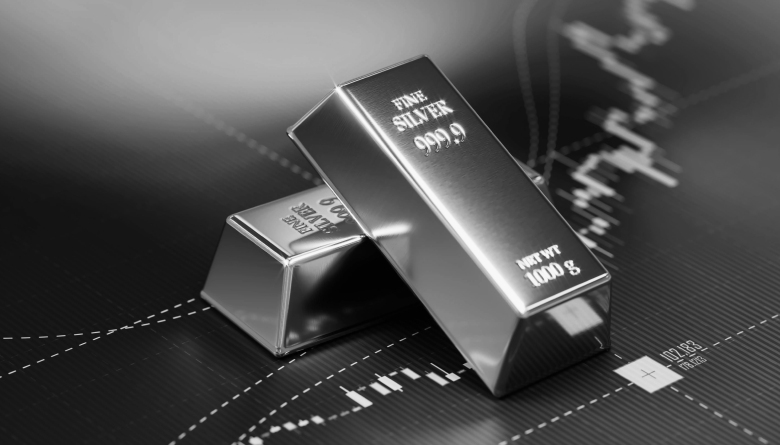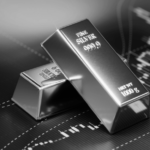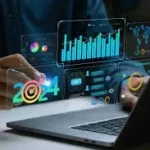Silver is much more than just a precious metal; it has been a fundamental part of human civilization for thousands of years. From its use in trade to its current place in the global market, silver’s value has remained resilient despite changing economic conditions. In this guide, we will explore the many aspects of silver: its history, why it’s valuable, its various uses, investment potential, and ethical considerations. We’ll also examine the trends and forecasts that influence its future. Whether you are a collector, investor, or someone simply interested in the world of silver, this article will provide valuable insights.
Table of Contents
What Is Silver and Why Is It Valuable?
Silver is a precious metal that holds significant economic and cultural value due to its unique properties. It has been used as a form of currency, in jewelry, and for various industrial applications for centuries. Silver’s high conductivity of electricity and heat makes it an indispensable material in electronics, renewable energy, and even medical fields. Its lustrous appearance and malleability have also made it highly sought after for decorative purposes, from coins to jewelry.
Throughout history, silver has served as a form of currency and has played a vital role in global trade. Even today, silver is seen as a safe investment during times of economic uncertainty. The combination of its historical value, practical applications, and aesthetic appeal ensures that silver remains a valuable commodity in today’s market.
The Current State of the Silver Market
The silver market is influenced by various factors, including industrial demand, investment trends, and market speculation. Over recent years, silver has been a hot topic due to its use in the growing fields of renewable energy and technology. As the demand for solar panels and electric vehicles rises, silver’s role in these industries has become increasingly important. Additionally, silver’s price is influenced by market conditions such as inflation, geopolitical events, and global supply chains.
Currently, silver is trading at a price much lower than gold, but it still remains one of the most valuable metals in the world. Investors looking for an affordable alternative to gold often turn to silver as a way to diversify their portfolios. While the silver market is volatile, it has demonstrated strong growth potential in recent years, especially in the context of global economic uncertainties.
Industrial Applications of Silver
Silver’s versatility is one of the reasons it remains in such high demand. In addition to being used in jewelry and coins, silver is an essential component in many industries. In technology, silver is used in the production of electronics like smartphones, computers, and solar panels due to its excellent conductivity. The metal is also used in various medical devices, such as wound dressings and surgical instruments, due to its antibacterial properties.
The renewable energy industry has also played a significant role in the demand for silver. As solar energy becomes more prevalent, the need for silver in the production of solar panels continues to rise. Silver is used in the panels for its conductivity, which enhances the efficiency of the solar cells. As technology continues to advance, silver’s role in both the industrial and technological sectors will likely continue to expand.
Investing in Silver
Silver is a popular investment asset for individuals looking to diversify their portfolios and hedge against inflation. There are several ways to invest in silver, including buying physical silver (such as coins or bars), silver exchange-traded funds (ETFs), or investing in silver mining stocks. Each method has its pros and cons. For instance, physical silver provides the security of tangible assets, while silver ETFs offer a more liquid and easily traded investment option.
Investing in silver can be a smart way to safeguard wealth, particularly in uncertain economic times. However, it’s important to understand the risks involved. The silver market can be volatile, with prices influenced by factors like inflation, industrial demand, and geopolitical events. As with any investment, careful research and consideration should be made before diving in.
Environmental and Ethical Considerations
Silver mining, like other forms of mining, has environmental and ethical implications. Mining operations can have detrimental effects on ecosystems, including habitat destruction, water pollution, and the depletion of natural resources. Additionally, the labor practices in some silver mining regions have raised concerns regarding workers’ rights and safety.
In response to these concerns, there has been a push for more sustainable and ethical silver sourcing. Companies and consumers are increasingly seeking responsibly sourced silver, ensuring that environmental and human rights standards are upheld. While progress is being made, there is still much to be done to ensure that silver mining has a minimal impact on both the environment and the communities involved.
Future Outlook for Silver
Looking ahead, the future of silver looks promising due to its role in emerging technologies and growing demand in sectors like renewable energy. As global efforts to combat climate change intensify, the need for silver in solar panels, electric vehicles, and other green technologies will likely continue to rise. Additionally, silver’s role in electronics and medical applications is expected to grow as innovation continues.
Silver’s price, however, will remain subject to fluctuations based on market dynamics, including shifts in industrial demand, investor sentiment, and global economic conditions. Experts predict that silver could see strong growth in the coming years, making it an attractive option for investors and industries alike 72sold reviews houzeo.
Conclusion
Silver remains a valuable and versatile metal with applications that extend far beyond just jewelry and currency. From its historical significance to its role in modern technology and renewable energy, silver continues to play a crucial part in global markets. For investors, silver provides an opportunity to diversify and protect wealth, while its industrial uses ensure that demand will continue to grow. However, the environmental and ethical considerations of silver mining must be taken into account as we move toward a more sustainable future. As the demand for silver increases, its future outlook remains bright, with the potential for continued growth and innovation across industries.
FAQs
- What makes silver valuable?
Silver is valuable due to its unique properties, including high conductivity, versatility in industrial uses, and historical significance as currency. - How is silver used in technology?
Silver is widely used in electronics, including smartphones, computers, and solar panels, due to its excellent conductivity. - What is the best way to invest in silver?
Silver can be invested in through physical silver, silver ETFs, or silver mining stocks, each offering different levels of risk and liquidity. - Is silver a good investment?
Silver can be a good investment, particularly during economic uncertainty, but its market can be volatile and requires careful consideration. - What are the ethical concerns surrounding silver mining?
Silver mining can harm the environment and raise human rights concerns, but ethical sourcing practices are being implemented to address these issues.







